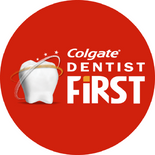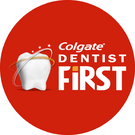Author: Louise Sinclair
Curious about the composition of toothpaste and its significance? As dentists, you know the importance of a good toothpaste in your patients' oral hygiene routine. Explore the complex formulation of toothpaste, which includes active and inactive ingredients and their crucial roles in achieving optimal oral health goals. Gain valuable insights to enhance dental expertise and patient care.
Active Ingredients in Toothpaste and Their Functions

Some toothpastes, such as Colgate Total, contain an active ingredient that is effective for all of these conditions, while other toothpaste may contain more than one active ingredient.
Anti-plaque/anti-gingivitis agent
Zinc citrate is an effective anti-plaque and anti-gingivitis agent that inhibits plaque growth, biofilm maturation, and calculus formation. They prevent halitosis, reduce inflammatory cytotoxic potential, reduce gingivitis and gum bleeding, and have high antibacterial efficacy.

Anti-caries agent
To strengthen tooth enamel and defend against demineralization, fluoride, a proven anti-caries agent, is added to toothpaste. Fluoride can help the enamel remineralize in cases of early caries, which can stop or even reverse the condition. Fluoride is the only anti-caries agent accepted by the Food and Drug Administration (FDA).

Some toothpastes, such as Colgate PerioGard Toothpaste, contain both anti-plaque/anti-gingivitis and anti-caries agents. It has a high antibacterial efficacy due to the unique combination of zinc citrate and fluoride.
Anti-hypersensitivity
Potassium nitrate is a common desensitizing agent. It forms a protective shield, relieving sensitivity.

Toothpastes with anti-hypersensitivity agents, such as Colgate Sensitive Plus, provide long-term relief with regular use and improve protection against painful shocks.
Inactive ingredients
An inactive ingredient is an ingredient that does not fall into one of the three active ingredient categories, but still plays an important role in the effectiveness of toothpaste.
Anti-calculus agents
Anti-calculus agents prevent the calcification and hardening of biofilm accumulations on the teeth.

Abrasives
Abrasive agents in toothpastes effectively remove biofilm and surface stains from teeth. Calcium carbonate, silicas, hydrated aluminium oxide, magnesium carbonate, sodium bicarbonate, and phosphate salts like calcium pyrophosphate are some of the ingredients.

Silica is the key abrasive ingredient in Colgate Total Toothpaste, which provides efficient cleaning and removes surface stains from teeth.
Detergents (surfactants)
The foaming action of toothpaste is caused by a surfactant, sodium lauryl sulfate, which helps to remove biofilm and debris, making it easier to brush away.
Whitening agents
Whitening toothpastes use abrasive agents and ingredients like polyphosphates to remove surface stains, while sodium triphosphate and silica address extrinsic and intrinsic stains. Colgate Visible White toothpaste, which contains sodium triphosphate and silica, whitens teeth by one shade in one week. Colgate Total, which contains zinc phosphate, also has a whitening effect with stain removal.
Anti-halitosis1
One of the ingredients that works as an anti-halitosis agent is Zinc citrate, which has antimicrobial properties that can help inhibit the growth of bacteria in the oral cavity. These bacteria produce volatile sulfur compounds (VSCs), causing unpleasant breath odors. Zinc citrate reduces this bacteria population, promoting fresher breath and mitigating bad breath.

Toothpaste such as Colgate PerioGard Toothpaste with zinc citrate fights halitosis by inhibiting odor-causing bacteria for fresh breath.
Flavoring agents
Flavoring agents include menthol, oils, and fruit for fresh breath and pleasant taste.
Sweeteners
Non-cariogenic sweeteners found in toothpastes include sodium saccharin, sorbitol, xylitol, and sucralose. Cariogenic sweeteners, such as sugar, are not permitted in ADA-approved toothpaste.
Humectants
To prevent water loss and maintain moisture, humectants such as sorbitol are added to toothpaste. They help retain moisture and prevent drying.

Sorbitol is found in toothpastes like Colgate Visible White.
Dyes
Toothpaste is coloured using food-grade or natural dyes, and the plain white color of white toothpaste is derived from titanium dioxide, an opacity-enhancing substance.
Binding (thickening) agents
Binding agents prevent it from separating and give it a consistent texture. A few common options are hydroxymethylcellulose, natural plant gums, and seaweed colloids.
Buffering agents
Toothpaste buffers, like sodium citrate, trisodium phosphate, and pyrophosphates, maintain pH stability in toothpaste, preventing alkaline or acidic conditions and preventing calculus formation.
Preservatives
Preservatives in toothpaste prevent microbial growth; the most common one is benzyl alcohol. Other preservatives, such as sodium benzoate and methyl paraben, are also used.
- Kim, S. A., & Cho, J. W. (2017). Gingivitis reducing effect of dentifrices containing zinc citrate. International Journal of Clinical Preventive Dentistry, 13(4), 217-222.

